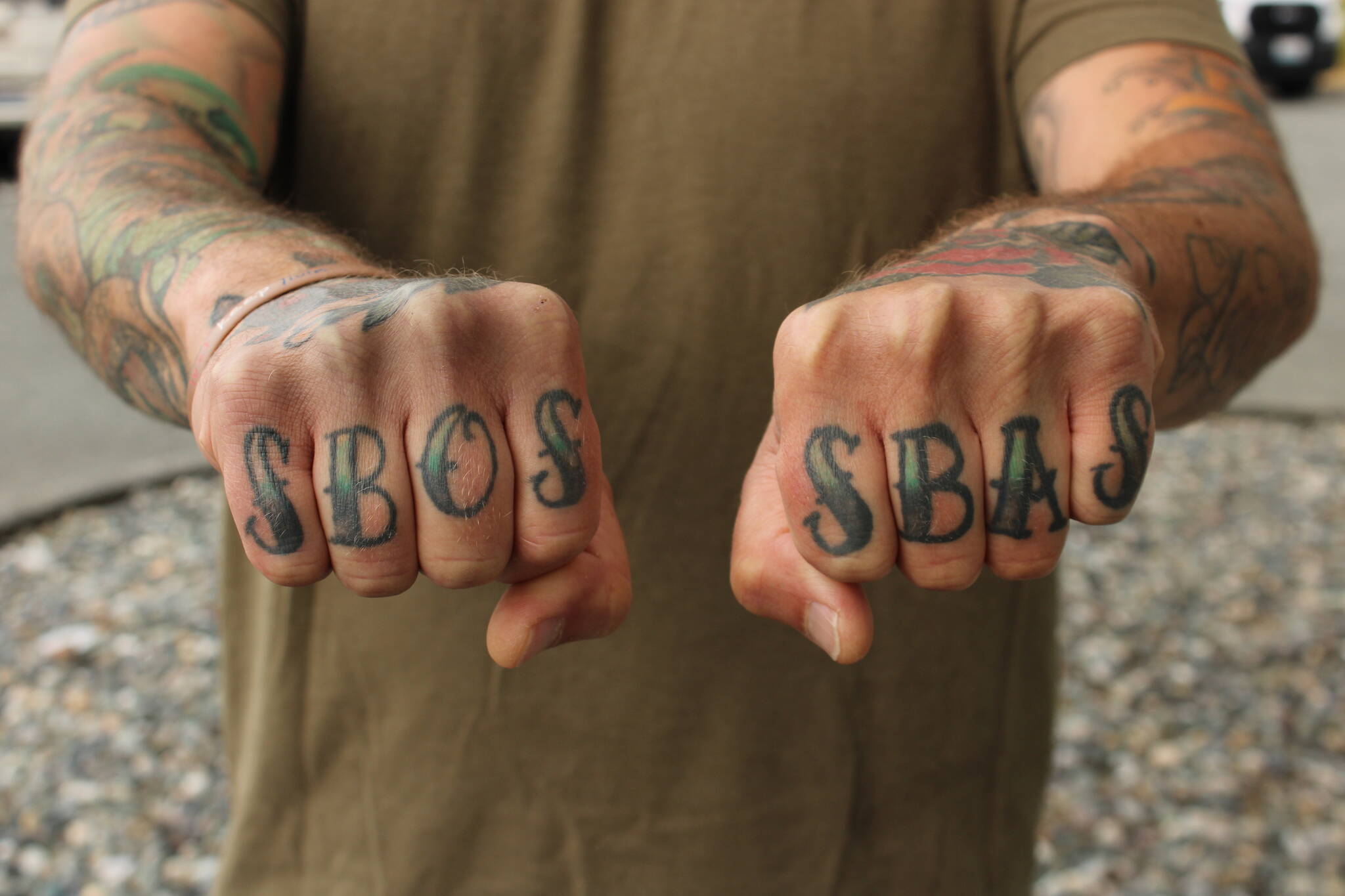Glancing at Command Master Chief Ben Faulise’s headshot to see a rose blooming from the dark sleeve of his dress service might evoke astonishment in some. To Faulise, the absence of any ink on a sailor is the bigger shock.
“I’m almost surprised when I meet people — enlisted people, of course — and they tell me they don’t have tattoos. How did you survive this long in the Navy without a tattoo?” he said, laughing. “It’s not in a bad way. It’s just a rite of passage for us for the most part.”
There are personal and practical benefits to the Navy’s tattoo regulations being perhaps the most relaxed they have ever been, reflective of their longstanding importance to the branch’s culture.
Attempting to define Navy tattoos is as difficult as attempting to define the people donning them.
Faulise, 47, started out in the Navy 29 years ago as an aircraft electrician, eventually working his way into administrative roles like the one he holds today. Most of his tattoos — full sleeves, ink on his legs, back and hands — are “nautically related,” like the black-and-white full-rigged sailing ship and the anchor submerged in waves of teal on each of his forearms.
Perhaps most notably are his finger tattoos reading “SBOS” on one hand and “SBAS” on the other, which stands for “Sailors Belong On Ships” and “Ships Belong At Sea,” Faulise’s “tagline” whenever he spoke over the PA system on ships.
“It’s more of a mindset than anything. It doesn’t mean that we all need to be out at sea all the time, away from our families,” he explained. “Rather, it just means it’s what we do.”
Kelly Davidson, manager of public programs at the Pacific Northwest Naval Air Museum, pointed out that tattoos can serve as a “badge of honor,” something to commemorate one’s service even when “you take off your uniform (and) you take off your medals.”
Honoring the fellowship formed in the military is another reason some get inked. Gary Zimmerman, 60, has a skull tattoo dedicated to his time among the International Brotherhood of Naval Flight Engineers which gained even more significance as technology began to eliminate the need for in-flight engineers.
Ultimately, the importance of Navy tattoos is, simply, the importance of tattooing as an artform — creating new meaning through repeated imagery. William Horton understands this.
“Everything’s already been done before. Everything’s been drawn, everything’s been tattooed,” he said.
Located across the street from Ault Field, the Nite Owl Tattoo Owner said 85-90% of his clientele over the 15 years he has spent tattooing professionally have been Navy.
Horton specializes in traditional tattooing, a style characterized by its heavier line weight, high saturation and longevity. Many, if not all, classic sailor tattoo designs are inked in this style — think sparrows, nautical stars and compasses — with common motifs coming to symbolize important events in a sailor’s life. Shellbacks, Horton explained as an example, are earned when a sailor crosses the equator.
Each of those designs bears the metaphorical fingerprints of the tattoo artists who have inked them and the individuals on the receiving end.
As Horton explained, while the subjects of the tattoos remain the same, the designs are inevitably, slightly tweaked as they continue to be recreated. Classic sailor tattoos can take on individual significance, too, even though cultural meaning remains largely the same. Horton’s dad, a sailor of 24 years, had a naked mermaid on his forearm, a lion on one shoulder and a dragon on the other — Horton’s first tattoo ended up being a dragon.
“Traditional sailor tattoo culture is still alive and strong,” Horton said.
Under current tattoo regulations in the Navy, last updated in 2016, offensive content is prohibited but sailors are permitted a small neck tattoo, hand tattoos and full sleeves, and there are no size restrictions on leg and arm tattoos, per the U.S. Navy Uniform Regulations Summary of Changes.
According to a Navy Times article, complaints from sailors motivated then-Master Chief Petty Officer of the Navy, Mike Stevens, to consider updating tattoo regulations. A staff member at the U.S. Navy Enlisted, Officer and Reserve Recruiting office on Naval Air Station Whidbey said he did not feel that relaxed tattoo regulations are related to recruitment in any way.
Many the News-Times spoke with, however, felt otherwise.
Although recruitment could be affected by other factors, Faulise characterized the regulations loosening as a case of “feast or famine,” suggesting they tend to tighten when recruitment is high. He explained that enforcing stricter regulations can be “impossible” anyways, and recalled how, when he first enlisted, sailors would skirt them by getting multiple tattoos that fit limiting size restrictions.
Besides, Faulise added, “you can’t just set one standard and hold it forever, because you start losing your target audience.”
Zimmerman felt the same. “I think they have to do that just with the changing makeup of society,” he said. “The military has to change because there’s some fabulous talent out there, and the regulations had to change with it.”
“I think it’s great that we are not excluding people because of that. We need all the help we can get,” Davidson said. “(Tattoos are) just a way of expressing who you are, your identity.”
Regardless, relaxing tattoo regulations merely allows sailors to participate more freely in a component of Navy culture that already exists and will continue to.
“It’s kind of our heritage,” Faulise said.



